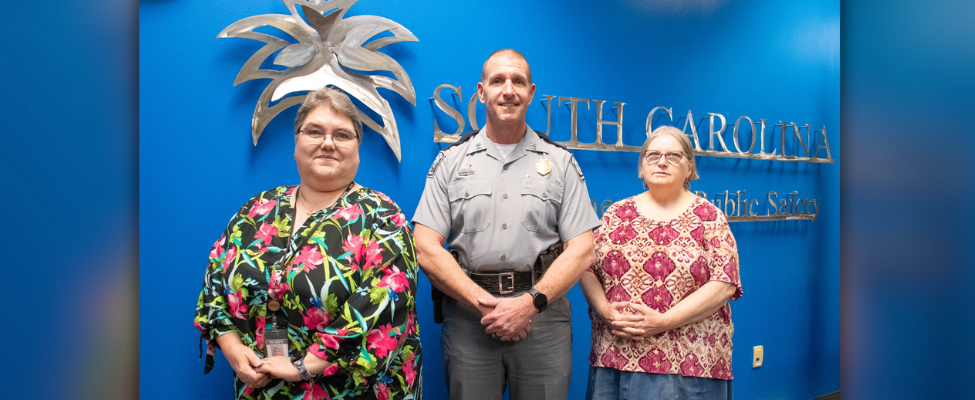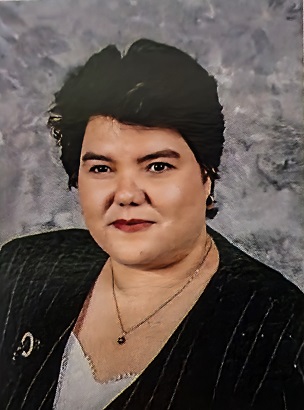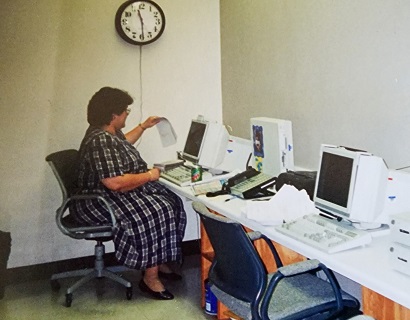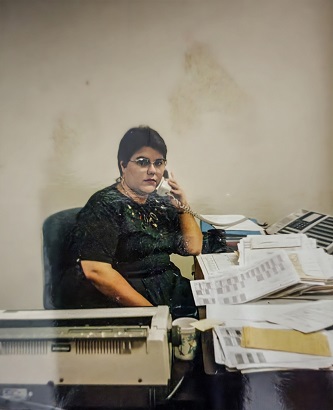
Thirty-seven years may seem like a long time to get up and go work at the same place every day. But for Patricia Sloan — who saw the Highway Patrol roll out its first computers, has worked with troopers across three generations of the same family, and witnessed the days when the Highway Patrol transitioned under the Department of Public Safety in 1993 — the changes have kept it interesting.
“It has not been the same job year after year. It’s constantly changing,” said Sloan, an administrative coordinator for the Highway Patrol’s Troop 1 headquarters in Columbia.
When Sloan began working as an administrative specialist at then-District 1 in 1987, typing was her primary skill set and function. From typing reports, to taking statements, to counting and processing tickets, they managed the troopers’ paperwork so the troopers could stay on the roads.
“We did everything the trooper needed,” she said. “They didn’t touch a computer, they didn’t touch a typewriter.”
Around the time she started work at Troop 1 headquarters, the building got its first copier and had recently begun the transition from typewriters to computers. In those days the building had only three computers, all in one room that administrative employees had to walk to in order to key in tickets.
When the agency began to transition to computers and new software systems, some troopers and civilian staff quit because they didn’t know how to handle them, Sloan recalled. In 2001, the Highway Patrol began referring to the seven geographical districts that comprised the agency as troops, and District 1 became Troop 1.
For better or for worse, technology has been the biggest change at the Department of Public Safety in 30-plus years, Sloan said. At one point, Major Israel Brooks secured pay raises for administrative employees who took a voluntary course on Microsoft Outlook, the email and calendar software that is now commonplace in state government. Earlier in Sloan’s career, the troopers would come into headquarters regularly so Sloan and the other administrative specialists could take statements or process tickets. Now, troopers do all of that from the road.
While she may not see the troopers as often as she once did, one thing that has remained the same is her respect for the Highway Patrol and the pride South Carolina troopers have in their work.
“That’s really what keeps this agency going. People have to take pride in the job that they do,” she said. “The pride that people take in putting that uniform on — it’s still the best thing that you could ever see.”
These days, Sloan’s responsibilities have evolved. She now handles payroll for the troop, and her voice is one of the first a person hears if they call the troop’s main number. Answering the phone has been a lesson in patience and empathy, said Sloan, who noted that most people calling the Highway Patrol’s office either received a ticket, were involved in a collision, or lost a loved one in a collision.
“If they’re calling here, they’re not happy, and they just need someone to listen to them,” she said. “Talking to these people, giving them a sympathetic ear, and listening to their problem so they feel like they matter — that’s very gratifying.”
Sloan admitted she didn’t plan to stay here for more than 30 years when she started working at District 1 headquarters, especially after the Government Restructuring Act of 1993. That legislation separated the Highway Patrol from the Department of Highways and Public Transportation and made it a division within the newly created Department of Public Safety. While DPS’ 30th anniversary was marked with celebration and reflection on its progress, employees who were here in 1993 said they didn’t really know what to expect.
She recalled that it took about six months for people’s fears to dissipate as they settled into SCDPS. Sloan credits B. Boykin Rose, the first SCDPS Director, for charting a path for the new agency and getting employees what they needed.
But the family-like atmosphere, reinforced by coworkers and supervisors who genuinely care about each other and what they have going on in their lives, led many to stay on despite the early budget issues.
“You know people on a more personal level here. You know their kids, you know their dogs’ names,” she said. “I think people generally enjoy working here because of the atmosphere. They are more understanding of your needs as a person.”
That’s been clear as Sloan has received much support from her co-workers as she cares for her aging mother. But it was most evident in 2021 when Sloan contracted Covid-19 and was on a ventilator in the intensive care unit for five days. She was out of work for four weeks, and her prognosis was grim.
“Every day, I would check on her. Nobody could go and see her,” said Major Everick Patterson, who was Troop 1 commander at the time. “Based on what her daughter was telling us, she wasn’t expected to make it.”
Patterson was among the supervisors who were happy, and grateful, for Sloan to return to work after her hospital stay.
“When I came back, every supervisor came in here and said, ‘We are so glad to see you,’” said Sloan, who also recalled receiving get-well cards from troops in other parts of the state. “I learned exactly how good a job I had.”
The job has had its ups-and-downs and undergone plenty of changes in the 37 years since Sloan first walked through the doors on Shop Road. But, if she had it all to do over again, she said she would — and that she wouldn’t change a thing.



